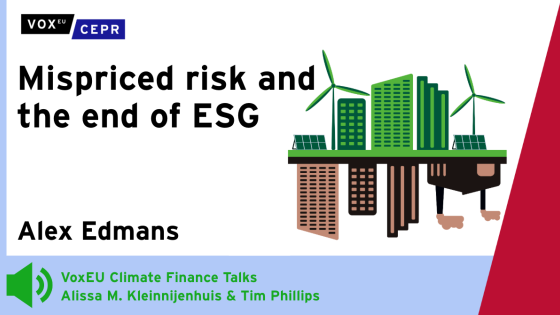Fossil fuel subsidies have attracted renewed attention following the Pittsburgh Summit of September 2009, where leaders of the G20 committed to “rationalise and phase out over the medium term inefficient fossil fuel subsidies that encourage wasteful consumption” (G20 2009). Leaders of the G8 and of APEC have subsequently issued similar statements. But while energy subsidies are not new, with some support policies going back decades, the context within which they are provided has changed dramatically. The need to mitigate climate change and its potential impact on people and economic activity is becoming more and more pressing, which encourages many countries to seek ways to reduce their consumption of greenhouse-gas (GHG) emitting fuels such as coal, petroleum, natural gas, and peat. Meanwhile, mounting public budget deficits have led governments to look for ways to decrease spending and increase tax revenues without endangering long-run growth prospects.
From these perspectives, a reform of fossil fuel subsidies may well be one of the most effective and attractive choices available to decisionmakers. At the micro level, it would improve allocative efficiency by removing some of the existing distortions that influence economic decisions. At the macro level, it would help secure deficit reductions, thereby relaxing some of the constraints facing policymakers. And at the global level, it would contribute to climate-change mitigation by inducing a shift away from fossil fuel-based power and towards increased energy efficiency and use of clean alternatives, thereby lowering GHG emissions.
While clearly attractive in theory, a reform of fossil fuel subsidies could prove challenging in practice. There remains the problem, for one, of defining what constitutes a fossil fuel subsidy. A second issue is the extent to which information is actually available regarding those policies that encourage a greater production or use of fossil fuels. Third is to understand the impacts of reform, including the adverse effects it may have on the poorest segments of society.
From subsidies to support
There are many views of what constitutes a subsidy despite there being an internationally agreed legal definition in the WTO’s Agreement on Subsidies and Countervailing Measures. Moreover, methods of quantifying subsidies are very often confused with efforts to produce a thorough, encompassing definition of a subsidy. For example, the International Energy Agency (IEA) has established the practice of estimating fossil fuel subsides using a “price-gap approach”, which is based on estimating the gap between domestic prices and an international reference benchmark.
This “price-gap approach” has yielded comparable estimates of fossil fuel consumption subsidies in various countries, but remains limited by its partial coverage. One reason for this is that many producer subsidies and some consumer subsidies do not necessarily translate into lower domestic prices. Another is that most OECD countries levy taxes on energy products that act to increase domestic prices above the IEA’s international reference price. Overall, the dominance of the price-gap approach has thus focused the debate on those consumer subsidies that are provided mainly in developing and emerging economies.
To account for those fossil fuel subsidies that are not captured by the price-gap approach, one needs to dig into the data, starting with that reported in official budgetary documents. Using this approach and a broader concept of “support” rather than that of “subsidy”, the OECD has recently produced an inventory of all budgetary transfers and tax expenditures that encourage the production or use of fossil fuels in most of its member countries (OECD 2012a). The OECD’s focus on “support” serves to provide a more flexible and neutral framework since it captures all measures that provide a preference for a particular activity in absolute or relative terms. When used in conjunction with the IEA’s estimates, the OECD Inventory should provide policymakers with a reasonably good sense of the magnitude of government support to fossil fuels worldwide.
Nonetheless, much more data collection remains to be done to support ongoing reform efforts by members of the G20 and like-minded countries. This is particularly true for producer subsidies in developing and emerging economies and other forms of support such as concessional loans or loan guarantees. Also problematic is the fact that government-provided estimates of tax expenditures, which account for the bulk of the support provided by OECD countries, are hardly comparable across countries as tax rates and systems vary internationally.
Some preliminary results
Bearing these caveats in mind, Table 1 provides preliminary estimates of subsidies and other forms of support to fossil fuels using both IEA and OECD data. Although the OECD concept of “support” is different from that of “subsidy”, which means that both sets of estimates are not directly comparable, those numbers nevertheless suggest that support in OECD countries is likely to represent only a small fraction of worldwide subsidies. Also, the fact that consumer support seems to account for a very large share of total support in OECD countries should not come as a surprise given that fossil resources are not evenly distributed across the globe and that many large consumers do not produce fossil fuels on a significant scale.
Table 1. IEA and OECD estimates of fossil-fuel subsidies and other forms of support
| |
2010 estimate
(USD billions, nominal) |
Geographical coverage |
|---|
| IEA estimates of consumer subsidies |
409 |
37 emerging and developing countries, including most BRIICS and MENA countries. |
| OECD estimates of producer support |
13 |
24 OECD countries, including major fossil fuel producers like Australia, Canada, Germany and the US |
| OECD estimates of consumer support |
41 |
24 OECD countries, including major fossil fuel producers like Australia, Canada, Germany and the US |
| OECD estimates of general services support |
7 |
24 OECD countries, including major fossil fuel producers like Australia, Canada, Germany and the US |
Data sources: IEA (2011), OECD (2012a).
Notes: The PSE-CSE framework distinguishes among those measures that benefit producers (PSE: Producer Support Estimate), consumers (CSE: Consumer Support Estimate), and those that benefit producers collectively, or that do not support current production, such as industry-specific R&D (GSSE: General Services Support Estimate). For more information, see the OECD’s PSE Manual, available online at: www.oecd.org/agriculture/PSE. Because many OECD support estimates are based on tax expenditures, their addition is subject to many caveats that warrant some caution when interpreting the numbers in the above table.
In the case of the 37 emerging and developing countries covered by the IEA estimates, it turns out that the biggest hydrocarbon producers tend also to be those that subsidise their consumption of fossil fuels the most in relative terms. Examples include Libya, Nigeria, and Venezuela, where fuel subsidies are generally seen by governments as a way to redistribute oil and gas profits back to the population. Fossil fuel subsidies constitute, however, a very crude policy tool to redistribute income since they are often poorly targeted, distort price signals, and encourage fuel smuggling (IEA 2011).
The picture looks rather different in the case of OECD countries since the support measures that can be found there are generally provided in a very indirect manner, i.e. through a country’s tax system for two-thirds of them. On the production side, the extraction of oil and gas attracts mostly royalty credits and income-tax concessions for certain capital expenses, while coal mining – a declining industry in many OECD countries – tends to receive compensation for its high-cost coal. On the consumption side, support often takes the form of direct fuel subsidies to low-income households and fuel-tax exemptions for targeted users such as farmers, other off-road users, buses or taxis. Subnational jurisdictions like states or provinces play an important role in providing fossil fuel support as well.
The effects of reform
There have been some attempts to simulate the effects that a reform of fossil-fuel consumption subsidies would have on income, trade flows and GHG emissions using IEA data and a computable general-equilibrium model (see OECD 2012b and Burniaux et al. 2011). Results suggest that a gradual, multilateral phase-out of subsidies over the 2013-20 period could reduce global GHG emissions by 6% by 2050 while increasing real incomes slightly (+0.3%).
Though encouraging, those results should not hide the fact that a reform of fossil fuel subsidies and other forms of support is likely to create losers, including low-income households for whom energy products account for a disproportionately large share of total expenditure. This should be recognised and compensatory measures taken if one wants to avoid a backlash (as recently occurred in Nigeria). At the same time, it remains the case that fuel subsidies are often regressive as they tend to primarily benefit high- and middle-income households (IEA, 2011).
Conclusion
Reforming fossil fuel subsidies stands as a rare example of a policy choice that offers a win-win outcome for both the economy at large and the environment. However, reaping its benefits first necessitates the emergence of a consensus over what constitutes a fossil fuel subsidy, along with improved transparency and communication regarding the magnitude of those policies and the effects of reform. All three points appear crucial today if one is to take the G8, G20, and APEC commitments seriously.
Editor's note: The authors are writing in a strictly personal capacity. The views expressed are theirs alone, and do not necessarily reflect those of the OECD Secretariat or the member countries of the OECD.
References
Burniaux, J, J Chateau, and J Sauvage (2011), “The Trade Effects of Phasing Out Fossil-Fuel Consumption Subsidies”, OECD Trade and Environment Working Papers, 2011/05, OECD Publishing.
G20 (2009), Leaders' Statement: The Pittsburgh Summit.
IEA (2011), World Energy Outlook, OECD Publishing.
OECD (2012a), Inventory of estimated budgetary support and tax expenditures for fossil fuels, OECD Publishing.
OECD (2012b), OECD Environmental Outlook to 2050: The Consequences of Inaction, OECD Publishing.






